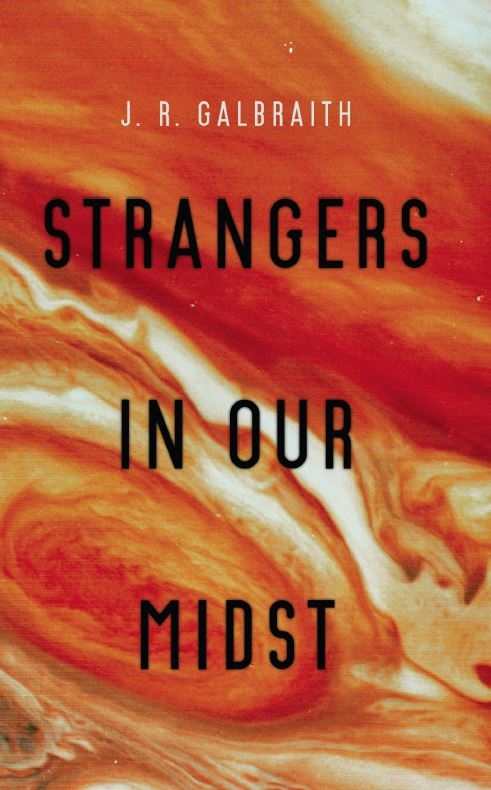Strangers in Our Midst
Well-written and intriguing historical accounts make it easy to forget this is a work of science fiction.
A string of infamous unsolved mysteries is given new life in J. R. Galbraith’s intergalactic novel, Strangers in Our Midst. Spanning more than a century and covering life on planet Earth, planet Nef, and beyond, the book explores how the will to survive and the need to understand the importance of a shared history bind the beings of the universe together.
In an attempt to regain their species’ lost emotionality, extraterrestrial historians Ti and Si are tasked with creating a written record of how the citizens of Earth react to unexplained phenomena. What follows is a series of eleven short stories beginning in 1828 with the peculiar case of Kaspar Hauser and ending sometime after 1994 with a story about the origin of the Great Red Spot of Jupiter. Ti and Si are able to reveal the “truth” behind these oddities as well as gain additional insight into the mental and emotional state of all earthlings and outer-space colonists, who are, after all, descendants of the same race.
Although Galbraith includes the standard disclaimer regarding the coincidental nature of any resemblance to actual events, the stories chosen for inclusion did all originate with real or at least notorious events, and are quite accurate in the details regarding names and places. Some tales, such as that of the Bermuda Triangle disappearances of the USS Cyclops in 1918 and the Flight 19 TBM Avenger torpedo bombers in 1945, are well known and well documented modern mysteries. Others, such as the 1855 riddle of “The Devil’s Hoofmarks,” are more obscure in nature, but Galbraith obviously did his research.
The progression through time is a bit random, moving steadily forward, jumping back nearly forty years, then going forward again. The tale of the Danish ship Kobenhavn is mislabeled 1948 in the introductory pages of the chapter but later corrected to 1928 in a subsequent paragraph, further muddling the time line. However, given the dubious nature of the accounts and the longevity of Ti and Si, accurate chronology is not entirely relevant.
The historical accounts are well written and intriguing, and Galbraith makes it easy at times to forget that this is a work of science fiction. The introductory chapters and the limited dialogue between alien historians gives a lot of information in a flat, dispassionate voice that, while appropriate for an emotionally incapacitated population, renders those portions of the narrative somewhat dry. Warring space colonies and opposing factions add a bit of excitement as Ti and Si attempt to understand and regain the “strong emotions” needed to achieve greatness. Originally eliminated to keep the peace during eons aboard a spaceship, the elders realized that without those feelings they had become “a static people. We neither regress, nor do we progress.”
With its unique voice and ideas, Strangers in Our Midst will appeal to both history buffs and Area 51 believers. Entertaining enough to be read all at once or piecemeal as a short story collection, it is sure to find a niche within the fandom of science fiction.
Reviewed by
Pallas Gates McCorquodale
Disclosure: This article is not an endorsement, but a review. The publisher of this book provided free copies of the book and paid a small fee to have their book reviewed by a professional reviewer. Foreword Reviews and Clarion Reviews make no guarantee that the publisher will receive a positive review. Foreword Magazine, Inc. is disclosing this in accordance with the Federal Trade Commission’s 16 CFR, Part 255.

